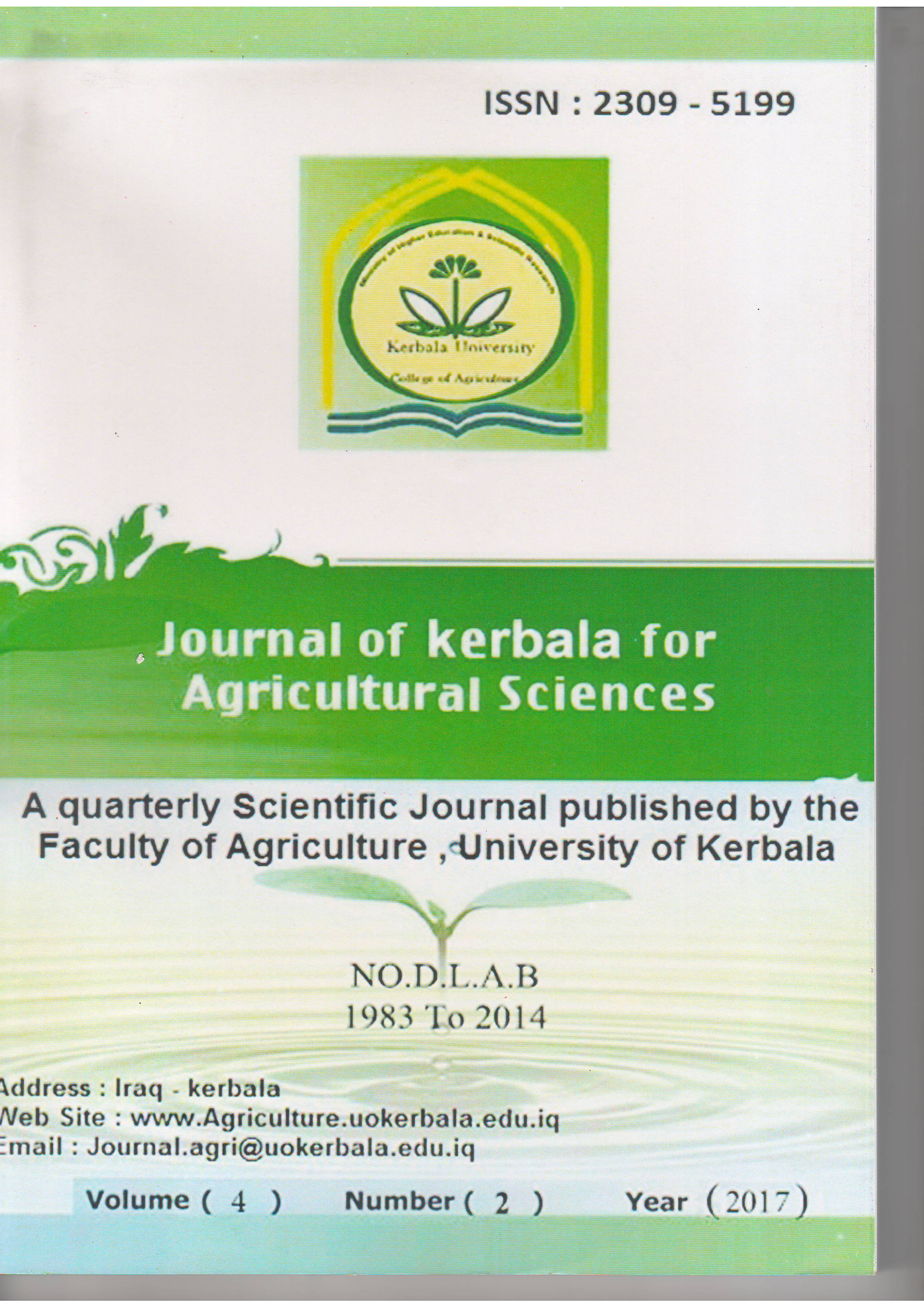Effect of silicon on salinity tolerance of two tomato (Lycopersicon esculentum Mill.) cultivars 1- vegetative growth characteristies
DOI:
https://doi.org/10.59658/jkas.v4i2.220Keywords:
Silicon, Salt stress, Tomato, Vegetative growthAbstract
The study was conducted elwing two growing seasons (2015 and 2016) in aprivate farm in Kufa-Najaf,with the objective of improving salinity tolerance of tomato (Lycopersicon esculentum Mill.) with exogenous application of silicon. The study included 40 treatments, whil were four levels of irrigation water salinity (2.5, 5.0, 7.5 or 10 ds.m-1) , two tomato cultivars (Aulla and Majid) and five concentration of silicon (0 , 50 , 100 , 150 , or 200 mg l-1). Asplit-split plot design was used in afactorial experiment with three factors and three replicates. The results were analyzed using analysis of ariauce and treatment means were comparod using the least significant differences (LSD) at 0.05. The effect of the above treatment were studied on vegetative growth characteristies were plant length ,number of side shrots,leaf number,leaf area as well as dry weights of the shrot sytem, Irragation water salinity at 7.5 and 10.0 ds m-1 caused a significant decrease in vegetative growth characteristies for both growing seasons. Exogenous treatment with silicon caused a significant increace in all vegetative growth characteristies, for both growing seasons. As for the effect of cultivars, the cultivar Majid was superior in all vegetative growth characteristies, as compred with cv. Aulla, for both growing seasons. As for interactions among treatments, they were significant in thair effects on vegetative growth characteristies and for both seasons.
Downloads
Published
How to Cite
Issue
Section
License
Copyright (c) 2017 Copyright (c) 2024 is the Author's article. Published by the Journal of Kerbala for Agricultural Sciences under a CC BY 4.0 license

This work is licensed under a Creative Commons Attribution 4.0 International License.
Licensing Terms
All articles are published under a Creative Commons License and will be directed to the Creative Commons Attribution 4.0 International License (CC BY 4.0) That permits use, distribution, and reproduction in any medium, provided the original work is properly cited. This license also allows the work to be used for commercial purposes.
Use by both non-commercial and commercial users
This content is licensed under a Creative Commons Attribution 4.0 International (CC BY 4.0) license, permitting use by both non-commercial and commercial users. Individual users may access, download, copy, display, and redistribute the articles to colleagues, as well as adapt, translate, and text- and data-mine the content, subject to the following conditions:
- The author's moral rights, including the right of attribution and the right to protect their work from derogatory treatment, are respected.
- Where content in the article is identified as belonging to a third party, users must ensure that any reuse complies with the copyright policies of the owner of that content.
- If the article content is reused for research or educational purposes, users should maintain a link to the appropriate bibliographic citation, including the DOI and a link to the published version on the journal's website.

